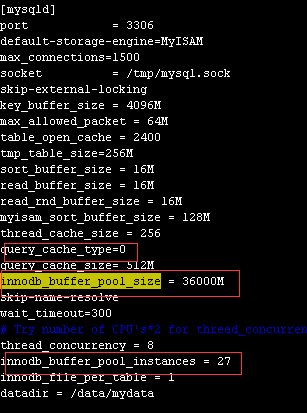Many option files are plain text files, created using any text editor. This is an encrypted file created by the mysql _config_editor utility. The snapshot is as follows − Type “services. ENTER as shown in the following screenshot − Now, a new wizard will open.
To do this, you simply the server and edit the my. This article will explain the steps to view and edit your my. One can use all long options that the program supports. What is the difference between my. Some of the default values in my.
By default, the OS X installation does not use a my. They are the same file. Make your changes here as mentioned above. I looked into the mysql. I tried a couple of things.

So I moved it back and edited the mysql. MySQL just uses the default values. We can have several of my. I think there would be more things to worry about than having your mysql password stolen. So I thought there must be something I can change in my.
DBAs can set the global SQL mode to match site server operating requirements, and each application can set its session SQL mode to its own requirements. I wanted to know where my. The ultimate tool for generating an optimal my. I’m not sure where or when it all started but it has become the norm to keep increasing the size and value of almost every setting in my. Lets look at some important my.
This is the default setup for Logging and Replication (in Debian server). In order to avoid databases crashes or overloads. Which is the ideal configuration of the my.
Permissions on the file are set to 644. Information in this document applies to any platform. For a long time, I’ve used a little trick to check whether there are syntax errors in a server’s my.
In this video, we will learn how to find the my. I do this when I need to shut down and restart the server, and I’ve either made changes to the file, or I’m worried that someone else has done so. I don’t want to have extra. I follow these instructions to install mysql in Ubuntu 14. But I make a clean installation of Ubuntu 16.
I replace the content for my. Then restart my terminal. So I just need to create the directory. Note that the content of the my. GitHub Gist: instantly share code, notes, and snippets.
This will quickly use a lot of disk space. There is also my -huge. The tables on my databases are almost exclusively InnoDB, except for 2-tables that are MyISAM and used for logging purposes (lots of INSERT DELAYED statements).
I'm having trouble adjusting the innodb_buffer_pool_size to something logical. Microsoft Windows it may be my. I have the following settings in my my. Note: You should back up your configuration file before changing it. I installed mysql -server-5.
Ubuntu server using apt-get install mysql -server, but i cant find my. This post details how to enable innodb_file_per_table on an existing database. Because innodb_file_per_table affects new tables only, created after innodb_file_per_table is enable we need to recreate old databases to force innodb_file_per_table on old tables and reclaim some disk space.
Anybody knows where is the my.
Geen opmerkingen:
Een reactie posten
Opmerking: Alleen leden van deze blog kunnen een reactie posten.